Kevin Clark was a small fish in a big pond. Now he’s a big fish in a big pond. After starting and expanding Critter Control through franchising, he has helped Rollins grow strategically by selling his business to it.
After leaving college in 1975, Kevin Clark headed home to Dearborn Heights, Mich., and held a number of jobs. But he didn’t find his niche until his father, Jack, suggested he try chimney cleaning, a job the elder Clark had done part time to supplement his salary as a teacher.
Using some equipment Jack Clark loaned him, Clark added a wet-dry vacuum and chimney sweep brush. He was in business.
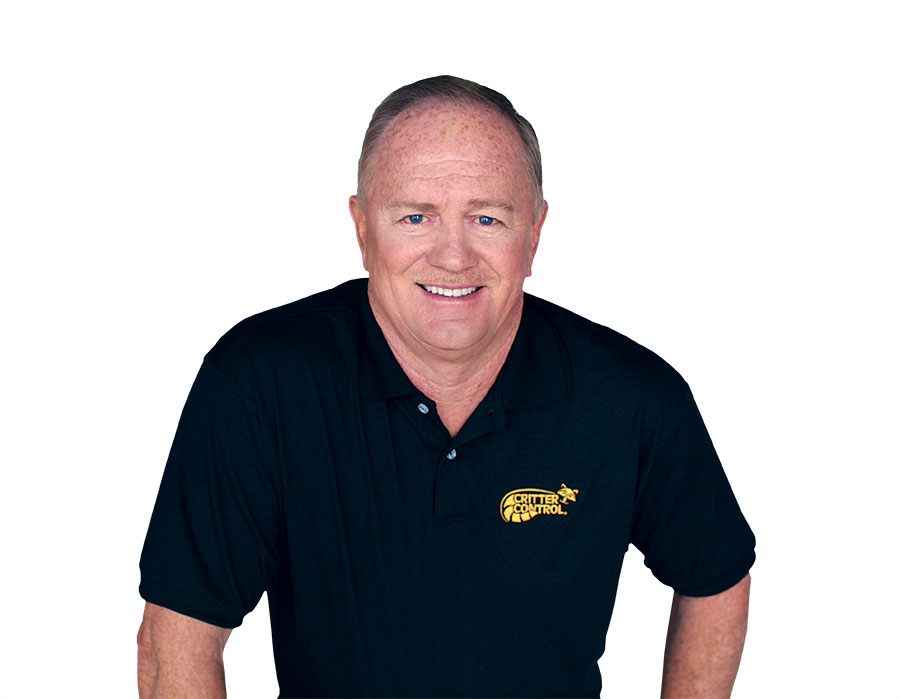
Kevin Clark transformed his chimney cleaning business to an animal removal service powerhouse.
Photo: Angel Eye Photography
By 1983, the chimney cleaning business was steady. But Clark started receiving more requests to remove animals from chimneys.
“All of a sudden, instead of breathing soot, I was pulling animals from structures, repairing roofs and installing chimney caps,” he recalls. “I discovered wildlife management was a growing trend and a more profitable business, so I concentrated on animal control.”
In 1986, Clark incorporated the Critter Control name and built his business in Westland, Mich. He began offering franchises in neighboring states a year later, and added an average of one new franchise a month during the next 10 years.
Critter Control grew from a one-man operation with sales of $45,000 in 1982 to a $35 million-a-year operation. By 2007, it had more than 100 locations and 450 employees. The company averaged a steady 20 percent annual sales growth for almost 20 years, until Sept. 11, 2001.
Clark generated growth largely from existing franchisees. In 2007, less than 10 percent of his 100 licensees operated more than one location. But when Critter Control joined Atlanta-based Rollins Inc. in March 2015, it reportedly had been the largest wildlife control company in the United States for more than two decades.
Franchise strategies
Early on, Clark allowed franchisees to name their territories. The fees were the same no matter the size of the market. As Clark gained experience — including buying machine-made chimney caps instead of making them from hardware cloth by hand at home — he had established four different types of franchise territories:
- A-type covered markets of 600,000 people or less, and cost a one-time fee of $18,000 plus 6 percent of annual revenues for ongoing support. The initial fee covered the application, license, training, marketing support and customer relationship management tools.
- B-type covered markets of 600,000 to 1.2 million people. It cost $24,000 up front, plus 6 percent of annual revenues.
- C-type covered markets of 1.2 million to 1.8 million people and cost $30,000 up front, plus 6 percent of annual revenues.
- D-type covered markets of 1.8 million to 2.4 million people and cost $36,000 up front, plus 6 percent of annual revenues.
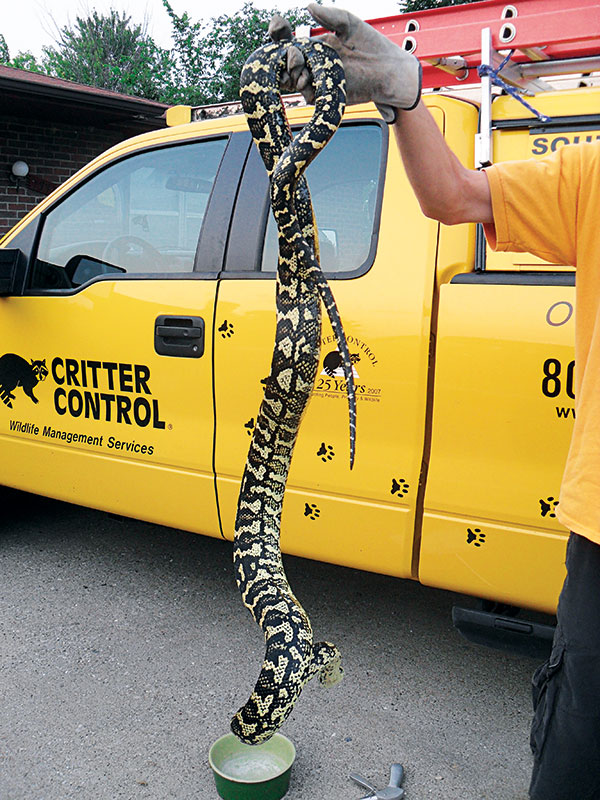
The gloved hand of Peter Riney, owner of Critter Control of Central Missouri, holds a captured snake.
Photo: Critter Control
There are currently more than 115 Critter Control franchises in more than 40 states. Today’s franchise territories are based on populations or profit potential. Licensees sign non-compete agreements covering the proprietary information and trade secrets the company has developed throughout the years. Recent growth is attributed to brand awareness and sales in key markets.
The company, which markets with the tagline “Protecting people, property and wildlife,” differentiates itself from competitors in the market by its people and commitment to providing quality service. That service includes guaranteed satisfaction. Its teams expertly handle animals of all sizes, focusing on vertebrate pests such as squirrels, raccoons, bats and birds.
In 2014, the year before Rollins bought Critter Control, company revenue was $58 million, Clark reports. Clark, a member of the National Pest Management Association (NPMA) and the National Wildlife Control Operators Association (NWCOA), says the main reason for its success is his employees.
“Any service business succeeds because of its people, and Critter Control has some of the best people I’ve ever known,” he adds.
Because Critter Control has operations throughout the country, it’s positioned to handle referrals nationally, not just locally. The company has established standards of excellence in animal pest control, and upholds these standards with a professional staff of biologists, zoologists, animal control officers and anti-cruelty personnel.
“Our highly experienced and qualified animal control teams can assist in any wildlife animal control problem, using humane handling strategies in all situations,” Clark says. “With over one hundred office locations in most major U.S. markets, our experts are ready to help with the best interest of yourself, your property and the problem wildlife in mind.”
The big deal
When Clark first started his company in the early ’80s, Orkin (also part of Rollins) was a big supporter.
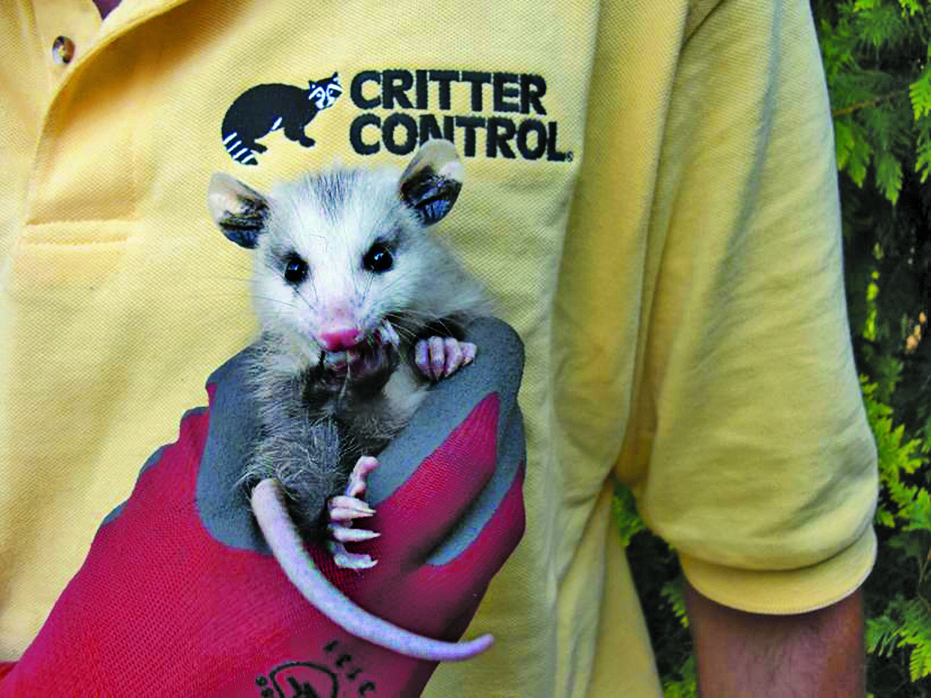
A possum pokes out of the gloved hand of Mike Faler, a past franchisee of Critter Control in Columbus, Ohio.
Photo:Critter Control
“They sent me leads and referrals and helped me get started,” he says. “And we’ve kept that great relationship throughout the years.”
When Clark started thinking about moving into the next phase of his career and personal life (his daughter graduated from high school this spring), he decided Rollins would be a great fit. Because Clark had an ongoing relationship with Rollins, he had entertained two previous offers, so some of Rollins’ due diligence this time around was already done.
“But we just weren’t ready to sell until last year,” he says.
The Rollins-Critter Control deal came together within just a few months.
“Because I had been preparing for this deal for more than 30 years, and Rollins was extremely professional and organized, it went very smoothly,” Clark says. “The transaction was almost anticlimactic.”
The relationship between Critter Control and Rollins existed for a while, so it’s difficult to put an exact date on when Rollins first reached out to Clark about purchasing his company, says Steve Leavitt, division president for Rollins’ specialty brands, including Critter Control.
“We had these acquisition discussions with him a couple of times before, but the timing wasn’t quite right,” Leavitt says. “Because we had done some of the research and legwork ahead of time, the final negotiations went pretty quickly.”
When large companies buy smaller ones, especially those entrepreneurial in nature, owners of the smaller businesses tend to be concerned about how the purchase will affect the company and its employees. But Clark didn’t have such concerns.
“Because the Rollins team and I had such a longstanding relationship, there wasn’t much to worry about,” he says. “The two things that were top on my list were that they would support the people and thebrand, and there was never any doubt about those.”
With such purchases, some employees who work for smaller companies leave because they don’t want to work for large ones. The vast majority of Critter Control employees work directly for independent franchise owners, however, so there was little cultural impact.
“We have a handful of support employees who will be affected. Some jobs will be eliminated because of economies of scale, and some will be retained,” Clark says. “Two-thirds of our employees are still on staff with Critter Control under Rollins Wildlife Services, have taken positions with other Critter Control offices, and one went to work with one of our vendors.”
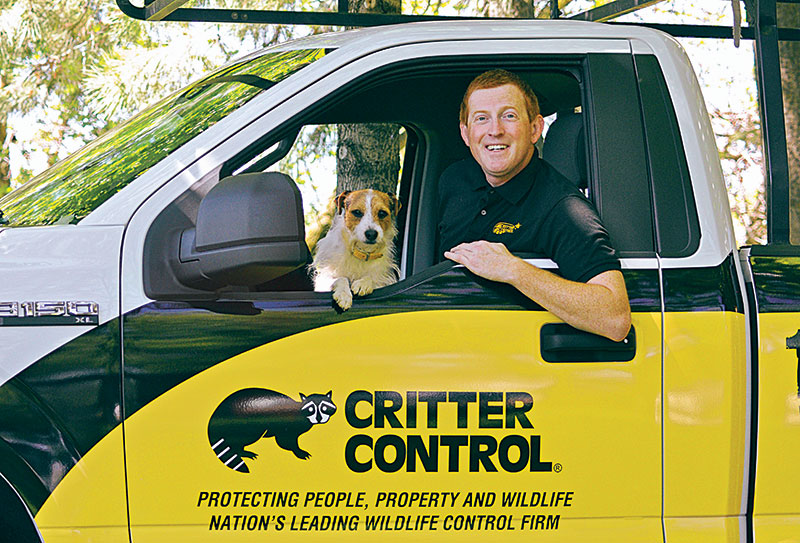
Caleb Stroh, owner of Critter Control of Salt Lake City, and Donny head out for a job. The Jack Russell terrier helps Stroh find critters dead or alive in walls and other hard-to-reach areas.
Photo: Critter Control of Salt Lake City
Rollins, which owns primarily pest control companies such as Orkin, Permatreat and Western Pest Services (see box below), was interested in Critter Control because it’s a strong brand and a customer-centric organization, Leavitt says.
“We share similar ethics and a devotion to the customer,” he continues. “Since the beginning of our relationship, we’ve known that when referring our existing pest control customers to Critter Control to address their wildlife issues, the customers have been pleased with the outcome. If we need to refer a customer to another company, it’s important that the other company shares the same values around taking care of the customer.”
Compared to the other purchases Rollins has made, the franchise network was really the only difference.
“It was more like over 100 small acquisitions because of the numerous independent owner-operators,” Leavitt says. “A shared vision and clear and transparent communication are imperative when working with the franchise network.”
A new operation
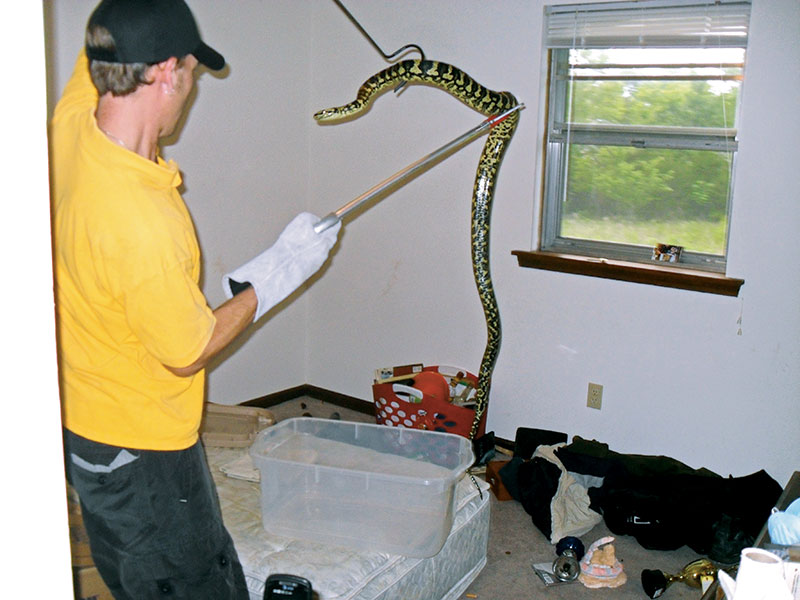
A Critter Control technician prepares to place a captured snake in a plastic bin for removal from the account. Photo: ©istock.com/Oktay Ortakcioglu
Operationally, some differences exist now that Rollins owns Critter Control. Because Rollins has been in business for nearly a century, it has shared a lot of what it has learned, including the reasons behind its decision-making. Critter Control benefits from Rollins’ large scale in terms of buying decisions, and Rollins can leverage Critter Control’s national-level reporting and marketing.
“It’s also nice to have some sister brands to approach if I need some additional resources,” Clark says.
But not much else has changed operationally with Critter Control, because Rollins is looking to provide the company the support it needs. For example, Critter Control is taking advantage of economies of scale in purchasing and marketing support, in addition to best practices.
“We continue to be reminded there are talented people out there who inspire us every day,” Leavitt says. “They know their teams, markets and businesses. They bring a unique approach, and we should let them do what they do.”
Since the purchase, Clark has moved away from the day-to-day operations to concentrate on the larger organization. He’s freed up to promote the brand, support operators and identify the next generation of franchisees. He’s now more of a brand ambassador.
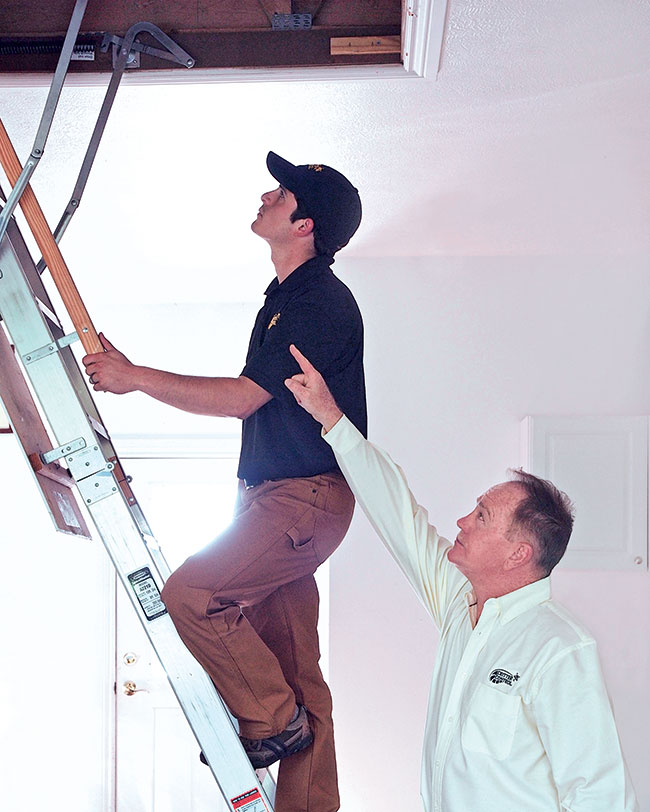
Kevin Clark instructs a Critter Control technician as he begins an attic inspection.
Photo: Angel Eye Photography
Conversely, Critter Control’s model fills a void that Rollins’ Orkin operators have found challenging. For example, if a general pest management customer needs an unscheduled visit, the technician often can work it into his or her day. But a wildlife visit takes significantly more time — and isn’t something that’s easily added to an existing schedule. Wildlife also requires specialty experience Orkin technicians may or may not have, so it needs its own focus to be done well.
“We believe that partnering with a highly regarded specialty brand to provide this expert service will enhance the overall experience for all of our customers,” Leavitt says.
Looking ahead, the keys to Rollins’ growth include:
- Keep the customers it has by providing superior service, and add new customers.
- Maintain a profitable pricing structure.
- Acquire well-run pest control and wildlife organizations that have strong, ethical operators who focus on customer service and keeping a healthy customer base. Overall, Rollins aims to focus on providing a superior customer service experience one service at a time, every time.
The Critter Control acquisition was Rollins’ largest of 2015.
“It’s a natural way for us to grow, because it’s all about cultivating relationships at the local level,” Leavitt says. “All of our operators are active in the community and the pest control industry locally. That puts us in a great position to identify well-run operations we might want to partner with. Sometimes those partnerships become acquisitions, and sometimes they don’t, but working together as industry partners makes everyone better.”
Critter Control’s Top 10 nuisance wildlife
Climate and location can determine which wildlife is the biggest nuisance for Critter Control throughout the year. The following list is the most applicable for spring and summer:
- Raccoons are nocturnal mammals common throughout North America. Besides the native northern raccoon (Procyon lotor), there are six other species, most of which live on tropical islands. These clever creatures have nimble hands and are intelligent problem solvers capable of opening latches, turning doorknobs, climbing, swimming and running quickly.
- Squirrels are divided into three groups: tree, ground and flying. Species categorized in all three have the capacity to cause destruction on lawns and in homes. Some of the more common species that regularly come into contact with humans and manmade structures include fox (Sciurus niger), eastern gray (S. carolinensis) and red (S. vulgaris) squirrels.
- Skunks (Mephitidae), which can be found throughout the continental U.S., are known for their acrid, pungent odor and black-and-white stripes. Their musk, which is produced by a pair of anal scent glands, can be smelled from far away. The bodily chemicals that produce the odor irritate multiple senses. Nocturnal and omnivorous, they eat many different foods, such as small insects, amphibians, rodents and garbage.
- Birds feed on insects, rodents, worms, fish and many other animals. Aside from pigeons, sparrows and starlings, most birds are afforded considerable protection by laws, regulations and public sentiment.
- Moles are mammals of the order Eulipotyphla, which includes hedgehogs and shrews. Subterranean by nature, they’re solitary creatures that can be found throughout the U.S. Their tunneling habits mar yards, gardens and farms.
- More than 40 bat (Chiroptera) species exist in the U.S., and nearly 1,000 different species live throughout the world. Although bats are capable of spreading disease, their existence is beneficial to humans and the environment. While some feed on nectar, other small mammals, fish or blood, most are insectivores and maintain a diet of night-flying insects.
- Commonly called meadow mice, voles (Cricetidae) thrive in grasslands and mountains. They can be found throughout the U.S. and feed on various plants. Their feeding habits damage growing trees, lawns and gardens. Voles are easily distinguishable from other commensal rodents by their short tails and less-pronounced ears.
- Possums (Didelphimorphia spp.) are the only marsupials native to North America, where they thrive in wooded and suburban areas east of the Rocky Mountains. The nocturnal mammals eat almost anything, including garbage, roadkill, rotten fruit, grass, insects, birds and snakes. They have a reputation for playing dead by curling onto their back, sticking their tongue out, squirting foul fluid from their anuses, and staring off into space when confronted by predators. They also attempt to scare predators by baring their teeth and hissing.
- The Norway rat (Rattus norvegicus), which is the most commonly found rat pest in the U.S., is also called a brown, house, sewer or wharf rat. Found in every state, it’s considered the most economically important rat in the U.S.
- The house mouse (Mus musculus) is second only to humans as the most common mammal in urban areas throughout the country. House mice are notorious nibblers that climb, jump and swim to reach to their favorite foods, which are often found in houses, farms, open fields and commercial buildings. Curious and fearless, they’ll chew through walls, electrical cables and storage containers to get what they want.
An industry power player
Founded in 1948 as Rollins Broadcasting, today Rollins Inc. is a global consumer and commercial services company. At press time, its wholly owned subsidiaries include:
- AllPest
- Crane Pest Control
- Critter Control
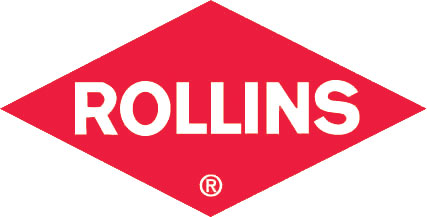
- HomeTeam Pest Defense
- Murray Pest Control
- Orkin Canada
- Orkin LLC
- PermaTreat
- Statewide Pest Control
- The Industrial Fumigant Co.
- Trutech LLC
- Waltham Services LLC
- Western Pest Services
Rollins serves more than 2 million customers in the U.S., Canada, Central America, South America, the Caribbean, the Middle East, Asia, the Mediterranean, Europe, Africa, Mexico and Australia from more than 700 locations.
John Walsh, a Cleveland-based freelance writer who specializes in the pest management industry, can be reached at jwalsheditor@gmail.com.
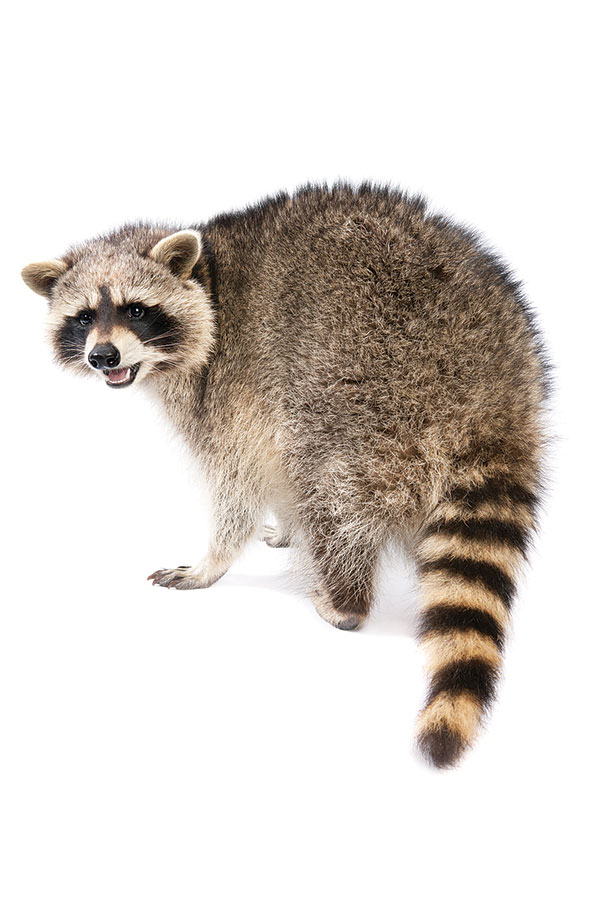
Leave A Comment